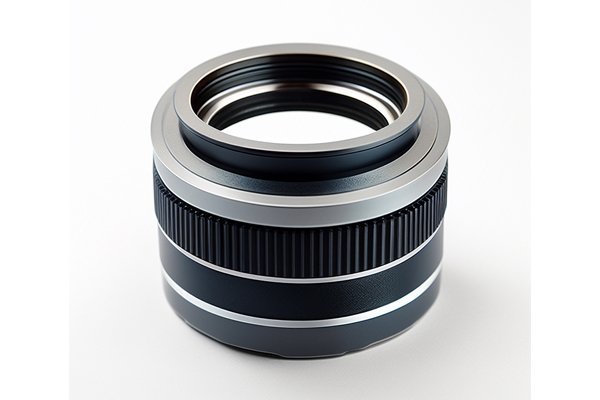Did you know that the global electronics market is projected to grow to $1.6 trillion by 2025? The surge in demand for electronics is fundamentally reshaping how product manufacturers approach design and development, particularly when it comes to housing for electronic components. The prototyping phase is vital in the electronics manufacturing process, as it drastically reduces time-to-market and minimizes costly errors. This blog explores how Computer Numerical Control (CNC) prototyping meets the intricate machining requirements of electronic product housings.
What is CNC Prototyping?
CNC prototyping uses computerized machinery to create precise components by cutting, milling, or engraving materials. CNC technology has gained momentum due to its automation capabilities, facilitating swift and accurate manufacturing processes. Various industries, especially electronics, greatly benefit from CNC prototyping’s precision, repeatability, and flexibility.
When it comes to electronic product housings, the requirements are numerous and rigorous. These housings are often designed to be ultra-light yet sturdy, largely due to the delicate components inside that require protection. Additionally, thermal management, aesthetic design, and ease of assembly need to be taken into account during the prototyping and machining processes.
Importance of Prototyping in Electronic Housing Production
Prototyping serves several crucial roles in the creation of electronic product housings:
Given these aspects, it is imperative to understand how CNC prototyping can successfully fulfill – if not exceed – the machining requirements of electronic product housings.
Key CNC Machining Techniques Versatile for Electronic Product Housings
Electronic product housings often consist of delicate, miniature components that demand precise machining capabilities. CNC machines can mill complex geometries with outstanding accuracy, often down to one-thousandth of a millimeter. This precision ensures that electronic components fit perfectly into their casings, significantly reducing assembly problems.
CNC machines can work with a wide array of materials, including metallic substances like aluminum and copper, as well as polymers and composites. This variety enables manufacturers to select the material that offers the best thermal management and mechanical stability for electronic housings.
CNC technology excels in producing custom parts. As the demand for specialized electronic product housings grows, manufacturers can leverage CNC prototyping to meet unique customer needs with different sizes, shapes, and designs.
The surface finish of electronic housings can impact their functionality and aesthetics. CNC machines can apply various surface treatments, such as anodizing and coating, to enhance durability and appearance. Customizing the texture can also lead to better grip and handling of products.

CNC prototyping makes it easy to incorporate intricate features that may be crucial for electronic housings, such as ventilation holes for thermal management, mounting brackets for internal components, or access ports for external connections.
Overcoming Common Challenges in CNC Prototyping
While CNC prototyping offers a plethora of advantages for electronic housings, it is not without challenges:
Solutions to These Challenges
Enhancing the CNC Prototyping Process
A. Choosing the Right CNC Equipment
Investing in modern CNC technology equipped with the latest features, such as adaptive toolpath generation and multiple processing axes, can dramatically enhance the quality and speed of prototyping.
B. Quality Control and Testing
Implementing robust quality assurance procedures, such as non-destructive testing methods (NDT) and regular machine calibrations, ensures that all prototypes meet stringent specifications.
C. Incorporation of Additive Manufacturing
Combining CNC machining with additive manufacturing can open unique possibilities for creating intricate electronic housings. For example, 3D printing can be utilized for rapid prototyping of initial designs that can later be validated through CNC machining.
Real-World Applications of CNC Prototyping in Electronic Product Housings
CNC prototyping is already being harnessed in various industries to create electronic housings, including:
CNC prototyping offers state-of-the-art solutions to meet the complex machining requirements of electronic product housings. From enhanced precision and material versatility to customization capabilities, CNC technology paves the way for innovative housings that meet diverse consumer needs. As the electronic market continues to expand, investing in CNC prototyping can prove vital for staying competitive and meeting the ever-evolving demands of consumers.
In today’s rapidly advancing technological landscape, understanding how CNC prototyping functions is crucial for manufacturers aiming for success. By prioritizing such advanced techniques, companies can ensure high-quality production, reduce costs, and ultimately create products that stand out in the marketplace. The importance of this innovation cannot be understated; it offers not just a solution but a foundation for future advancements in the electronic industry. Are you ready to leverage CNC technology for your production requirements?
Related Posts
- What are the best practices for calculating project costs in CNC machining for accurate budgeting?
- Corrosion Resistance in CNC Machining: A Comparative Study of Titanium, Brass, and Aluminum
- What are the differences in machining time and quality between high-speed cutting and conventional CNC machining?






